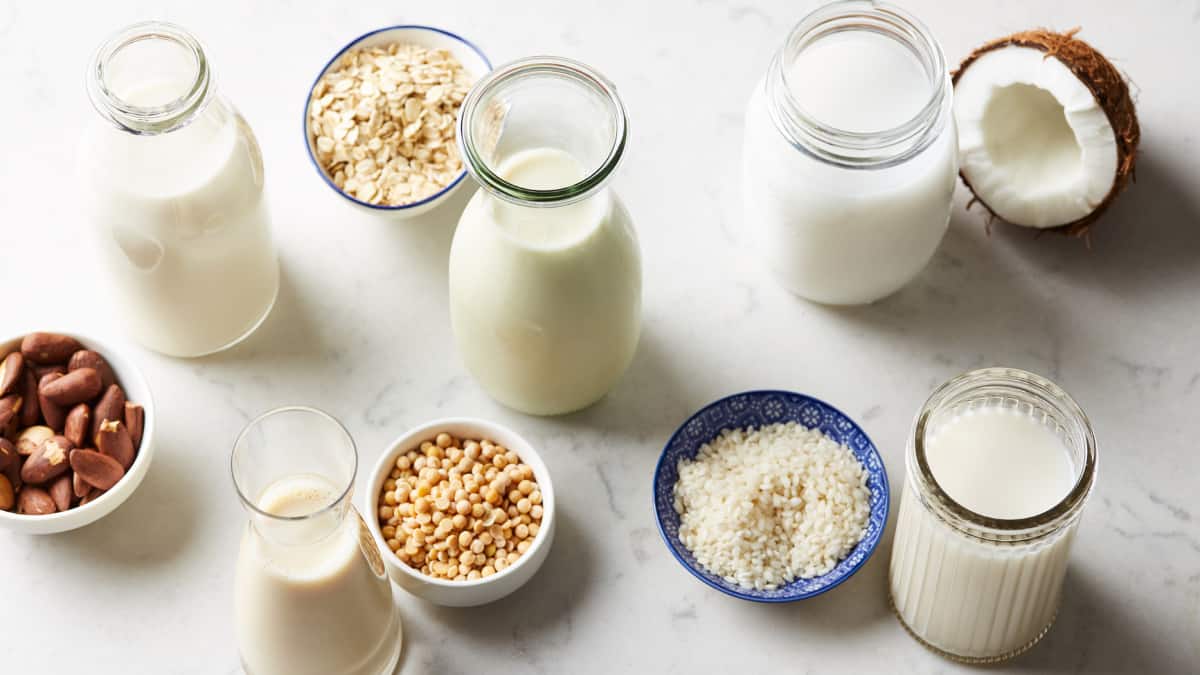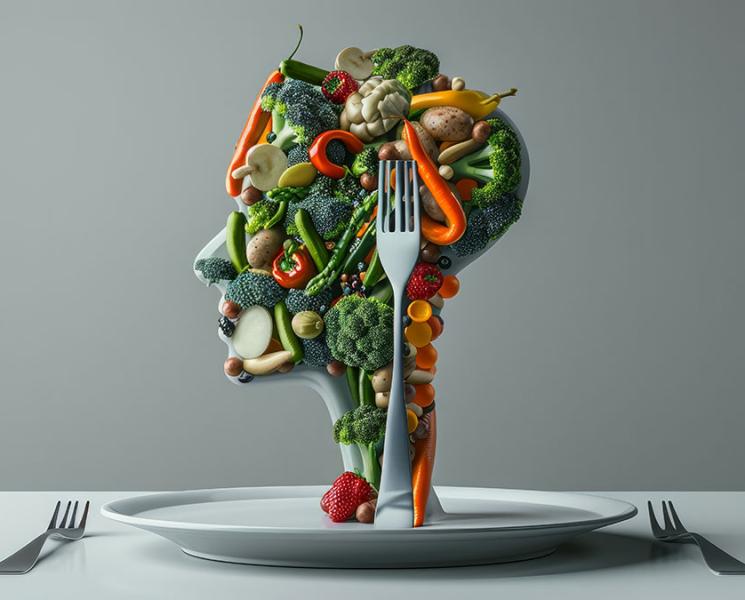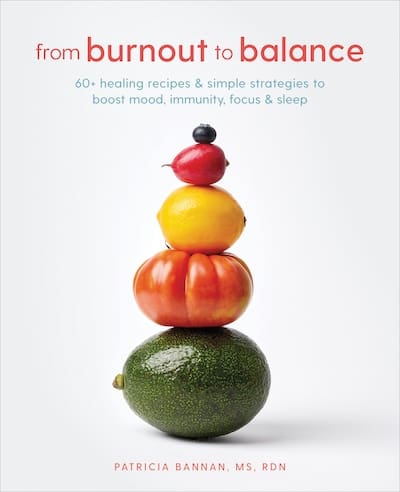When you think of milk, you probably first think of cow’s milk. But with so many milk alternatives available these days, it’s worth comparing all of your options.
Milk alternatives have found their way into coffee shops, cafes, restaurants and more. You’ve also likely started to see a lot more than just cow’s milk, soy milk, and almond milk in your local grocery store.
From plant-based trends to dairy intolerances, the amount of people avoiding dairy or cow’s milk seems to increase by the day. Whether or not you fall into those groups, it’s important to understand what milk and milk alternatives can offer nutritionally. Taste is a bonus too!
Nutrients to Look for In Milk
Before you head to the store or search online to decide your milk of choice, it’s valuable to know which nutrients you should be looking for on the label.
Many milk alternatives are lacking in protein, vitamins A and D, and calcium. That’s why manufacturers typically add some of these nutrients back in. This makes a milk alternative more similar to cow’s milk (though the protein is often still missing). Vitamin D is important because it helps you absorb calcium in the milk and has recently been shown to help prevent a number of chronic diseases.
Several brands also tend to include added sugar and contain high levels of saturated fat. Before choosing your milk of choice, be aware of the nutrition content, and if it doesn’t have a good amount of protein, calcium, vitamin A, or vitamin D, make sure you make up for that elsewhere in your diet. Now let’s take a closer look at milk and milk alternatives.
DAIRY-BASED OPTIONS:
Cow’s Milk
Most other “milks” may not be as naturally high in calcium as cow’s milk (containing 300 mg per one-cup serving; or about 30 percent of your Daily Value). Cow’s milk also naturally contains 8 grams of high-quality protein per cup, as well as potassium, a mineral important for bone strength, heart health, and muscle strength.
If you choose a dairy-based milk, try pairing it with plant-based foods for added fiber, like in this Creamy Chocolate, Cannellini Bean, and Cinnamon Smoothie with 8 grams of protein and 6 grams of fiber per serving.

Kefir Milk
Kefir is a nutritional powerhouse made from regular cow’s milk. The catch? It’s the fermented version. This creates a consistency similar to liquid yogurt. The key benefit is the probiotics that develop from the fermentation process. Kefir may not be a go-to for your morning coffee, but it can be a fantastic addition to your smoothies!
Read more about kefir and other probiotic-rich foods in 5 Foods Naturally Rich in Probiotics.
Lactose-free Milk
This is regular cow’s milk with a twist—the lactose is previously digested so it won’t create stomach problems if you’re sensitive. Lactose-free milk contains the same number of calories and calcium as regular milk. If you think milk is giving you stomach discomfort, give lactose-free a try.
a2 Milk
This milk has gained popularity in the past couple of years. What is it? Regular cow’s milk that comes from cows who only produce a2 protein, rather than both a1 and a2. The benefit? Some people say it helps digestion. Keep in mind that both of these proteins are in regular lactose-free milk. It’s possible that some people who think they have lactose intolerance may just be sensitive to the a1 proteins.
Goat Milk
Goat milk is pretty much what you can guess – milk from goats rather than cows. This milk has a slightly different taste than cow’s milk and contains less of the a1 protein mentioned earlier. It’s also lower in lactose, so it may be a good alternative for those with sensitive stomachs. It naturally contains calcium, and often has vitamins A and D added to it.
PLANT-BASED OPTIONS:
Soy Milk
If you can’t tolerate cow’s milk or prefer a vegan option, soy milk is a great choice. It’s made from pressed soybeans. A one-cup serving contains about 100 to 140 calories. It is higher in fat than skim milk, but it also contains omega-3 fats, which are good for heart health. Soy milk is naturally lower in protein and calcium in comparison to cow’s milk, though it’s still near the top of the list for plant-based milks. Most manufacturers add calcium to make up for the difference. Flavored soy milk is another added sugar culprit, so opt for the unsweetened version.
Almond Milk
Almond milk is produced from finely ground almonds and water. This thin milk has no saturated fat, but little protein— only about 1 gram per one-cup serving, which is similar to rice milk. Manufacturers typically add calcium and vitamin D, but this varies by brand. Check the label to be sure of what you’re getting!
Try this Sleepy Almond Lavender Chamomile Milk for a relaxing recipe with almond milk.

Oat milk is gaining popularity, so if you haven’t seen it around town quite yet, don’t be surprised when you do! You can make oat milk by blending the oats, then draining the mixture to keep the liquid. Oat milk is generally lower in protein and potassium as compared to cow’s milk, but it’s usually fortified with calcium and vitamin D. Unlike cow’s milk, it also contains some fiber for digestive health. Oat milk is a great option for those with any nut or dairy intolerances.
Rice Milk
This milk is made from rice and water. It’s very low in protein and contains no saturated fat or fiber. As with most milk alternatives, makers often fortify it with calcium and vitamin D. Rice milk usually contains added sugar, so keep this in mind when looking at different varieties. It’s another dairy-free, nut-free friendly option.
Coconut Milk
Derived from the flesh of the coconut, coconut milk is typically high in calories and saturated fat. However, its fat contains a type of MCFas, or medium-chain fatty acids, that may offer health benefits. Look for “light” coconut milk drinks with fewer calories and less fat if this is your milk of choice. One of its key benefits is how different its flavor profile is from the others, which is perfect for curries or soups!
What is your favorite kind of milk or milk alternative?
For more information on milk alternatives (including Hemp Milk and Cashew Milk), check out my interview in SELF magazine: The Pros and Cons of 6 Dairy Free Milk Alternatives.





